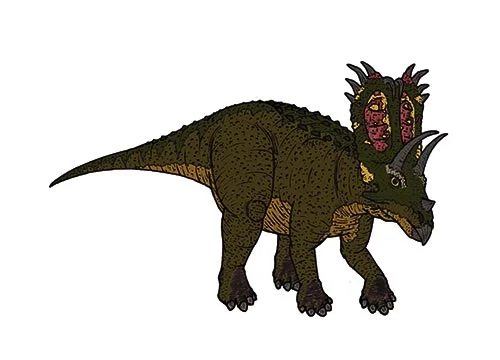Pentaceratops (Five horn face)

Pen-tah-seh-rah-tops
( First Discovery ) John Bell Hatcher – 1921
Henry Fairfield Osborn – 1923
Herbivore
Estimated 7.5 meters long
Ceratopsian
P. sternbergii (type)
USA, New Mexico, Colorado
Late Cretaceous, 75-73 million years ago
Pentaceratops Facts
Pentaceratops, whose name means “five horn face,” is a genus of herbivorous ceratopsian dinosaur that lived during the Late Cretaceous period, approximately 75-73 million years ago. It was first discovered in 1921 by the paleontologist John Bell Hatcher in New Mexico, USA.
Pentaceratops was a large dinosaur, measuring up to 7.5 meters (25 feet) in length and weighing up to 5 tons. It was characterized by its five horns – two on the brow and one on each cheek, as well as a large frill at the back of its skull. The frill had two large holes, or fenestrae, which made it lighter and more flexible. The frill likely played a role in regulating the dinosaur’s body temperature, as well as in display and communication.
Pentaceratops was a herbivore, and its teeth were specialized for grinding tough plant material. It likely lived in herds, which would have offered some protection against predators such as Tyrannosaurus rex. It is thought that Pentaceratops was able to defend itself against predators using its formidable horns and frill, as well as by kicking with its powerful hind legs.
Despite its impressive appearance, Pentaceratops is not as well-known as some other ceratopsians, such as Triceratops. This is likely due in part to the fact that fewer fossils of Pentaceratops have been found, as well as the fact that it was geographically restricted to the southwestern United States. However, its discovery has contributed greatly to our understanding of the diversity of ceratopsian dinosaurs, as well as their evolution and behavior.



